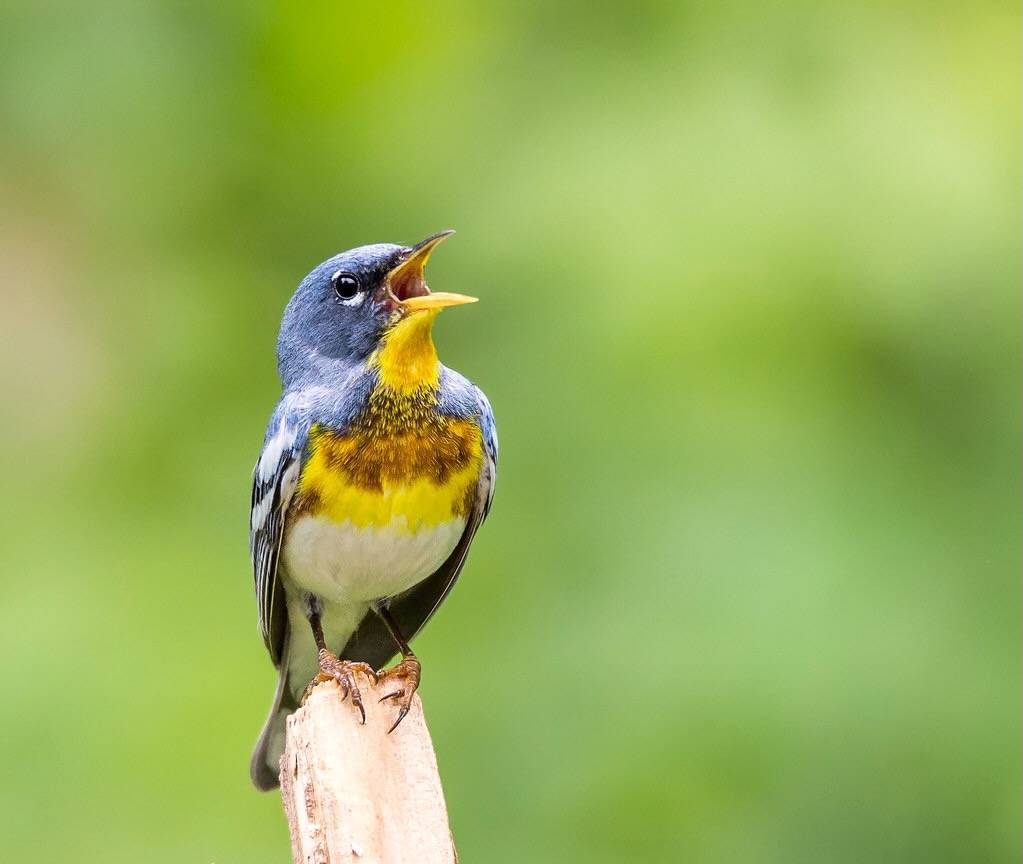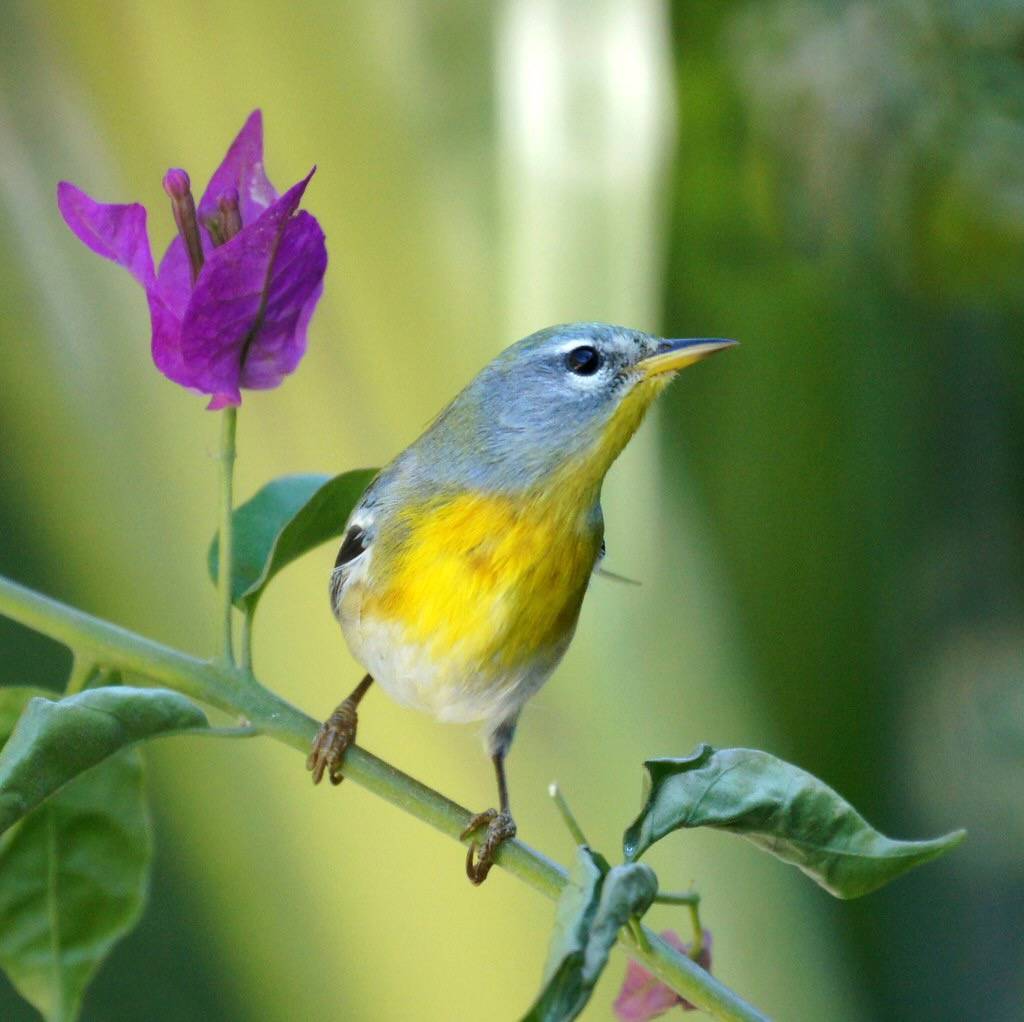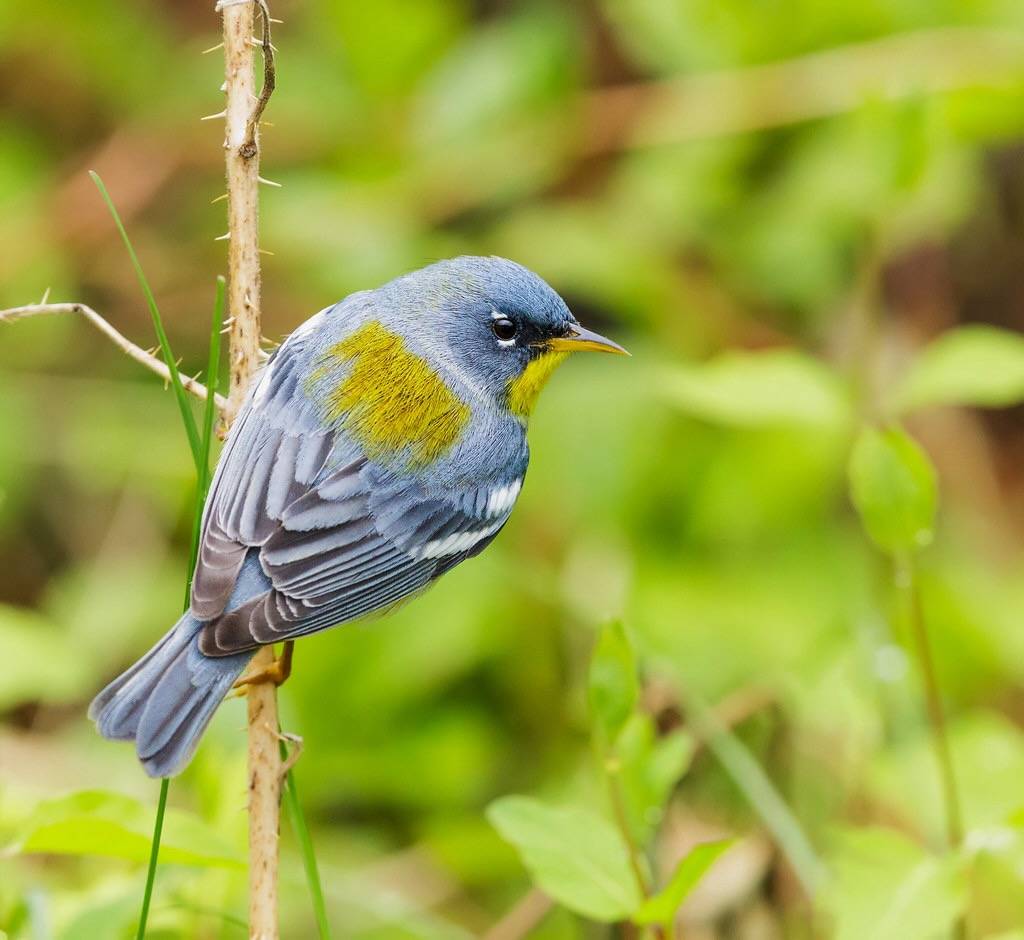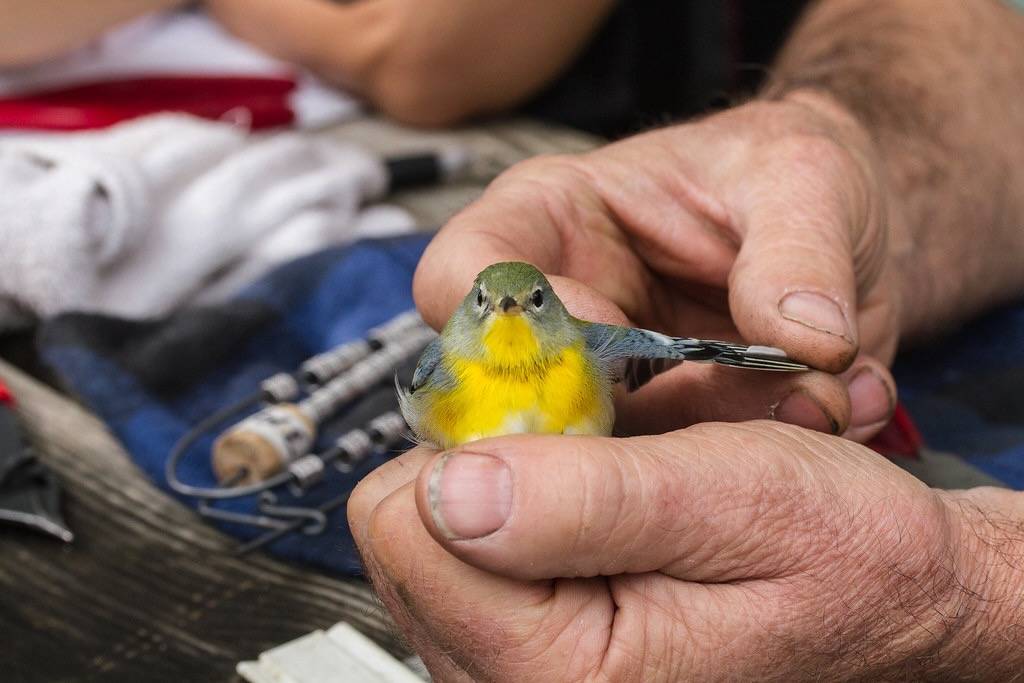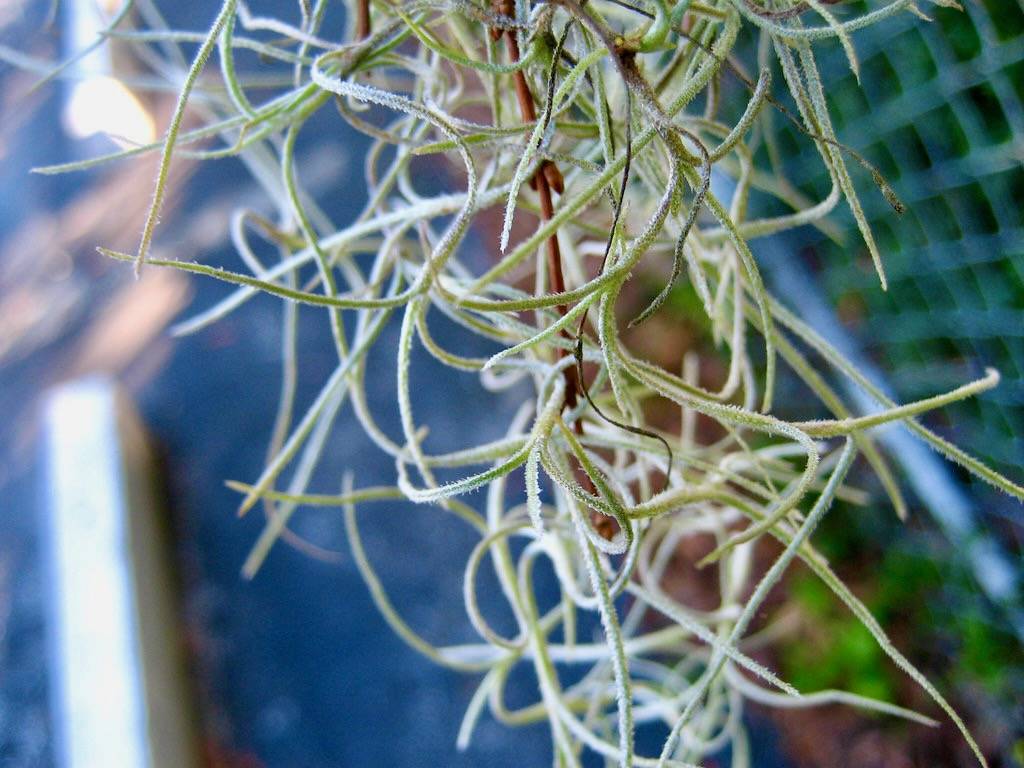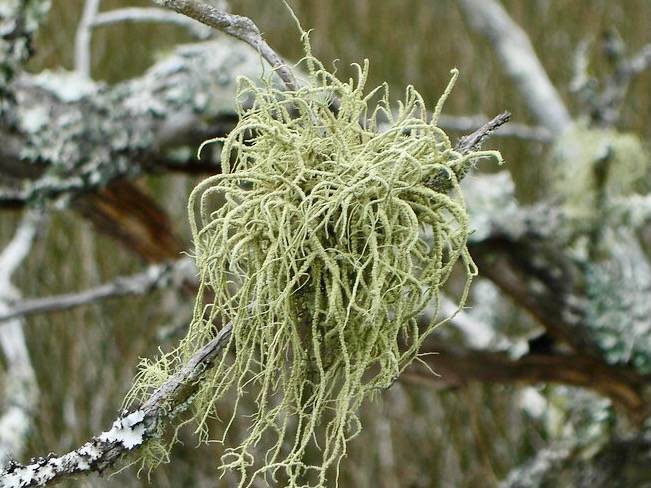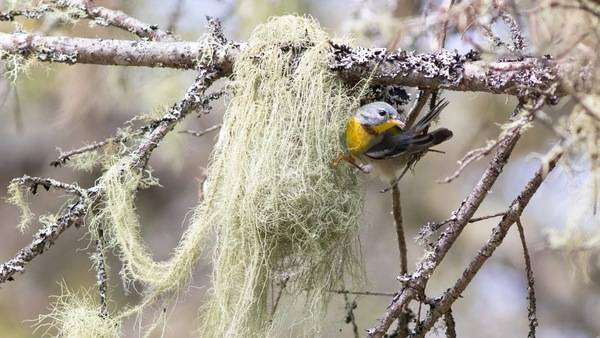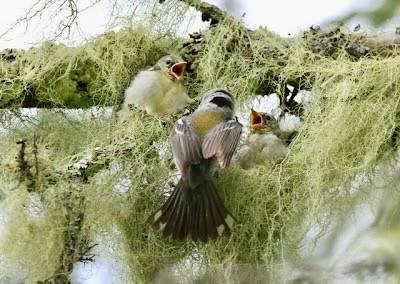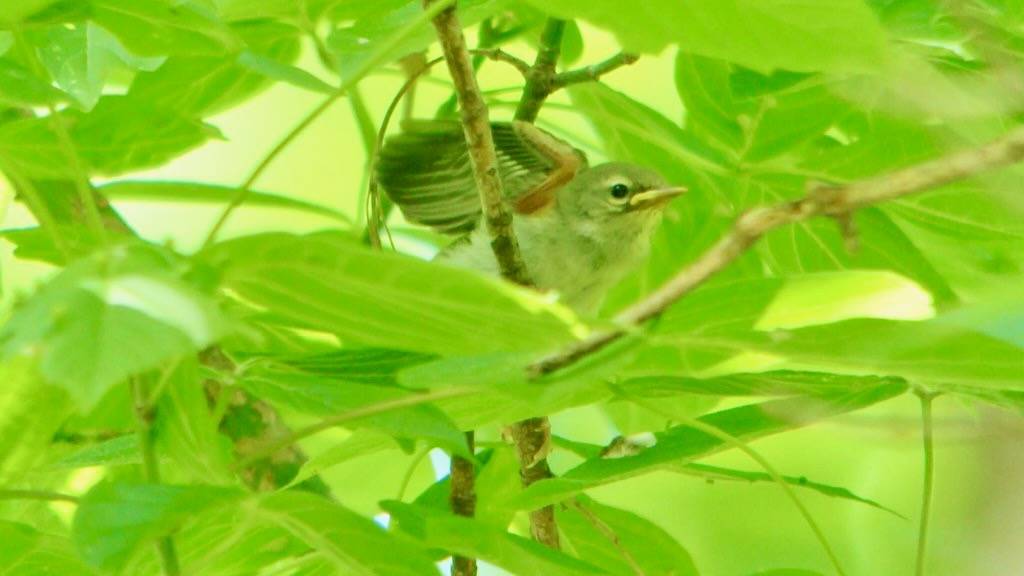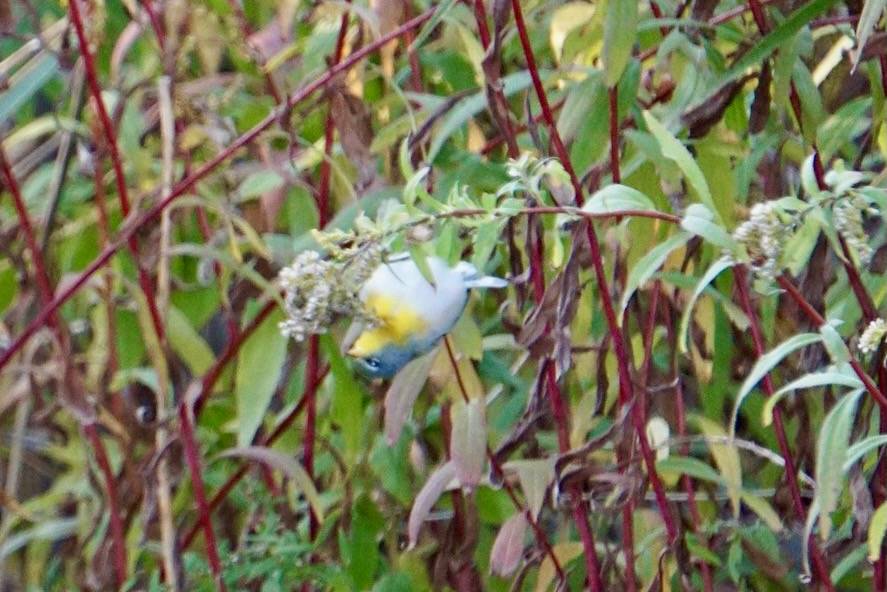Northern Parula
From 2002 through 2023, the Northern Parula has been recorded only twice at Salter Grove, during migration. A male was seen singing on a newly leafing tree branch on Upland Trail in May 2019, and a female was observed in October 2020 feeding on the seeds of smooth goldenrods growing north of the parking lot.
It is one of the smaller warblers, and is usually hard to see during the breeding season because of its preference for gleaning insects in dense canopy foliage. It is only during migration that it will drop down to lower vegetation for foods other than insects, like seeds, berries, and sometimes nectar.
The Northern Parula breeds in eastern North America from Florida to southern Canada and winters in Mexico, northern Central America, and the West Indies. It will only nest in dense mature forests moist enough to support either of two epiphytes that grow loosely draped on tree branches. In southern bottomland forest, it builds its pouch-like nests with wisps of Spanish moss, a plant related to the pineapple. In northern forests, it uses Old man's beard, a branching and equally wispy lichen.
Due to its dependence on such specific nesting material, there is a gap in the breeding range of the Northern Parula. It does not breed in the midwestern states, and is absent or scarce in much of southern New England, New York and New Jersey. Habitat destruction combined with industrial pollution during the 19th century largely decimated the epiphytic plants essential for nest construction.
At present, there are conflicting trends in the reestablishment of breeding populations in southern New England where epiphytic lichens have regenerated to varying levels. Nesting Northern Parulas have been recorded since 2015 in two swamp forests in Rhode Island, and these populations appear stable. In contrast, whereas eight breeding locations were recorded for Massachusetts in 1978, only a few nesting pairs were observed at a single location on Cape Cod by 2019.
The Northern Parula will continue to be a regular migrant throughout the Northeast, however, because nesting individuals are common in suitable forests further north.
For more information:
https://www.allaboutbirds.org/guide/Northern_Parula
https://www.audubon.org/field-guide/bird/northern-parula
https://en.wikipedia.org/wiki/Northern_parula
https://dem.ri.gov/sites/g/files/xkgbur861/files/programs/bnatres/fishwild/swap/SGCNBirds.pdf p. 69
https://www.mass.gov/doc/northern-parula/download p. 2
https://animaldiversity.org/accounts/Parula_americana/

